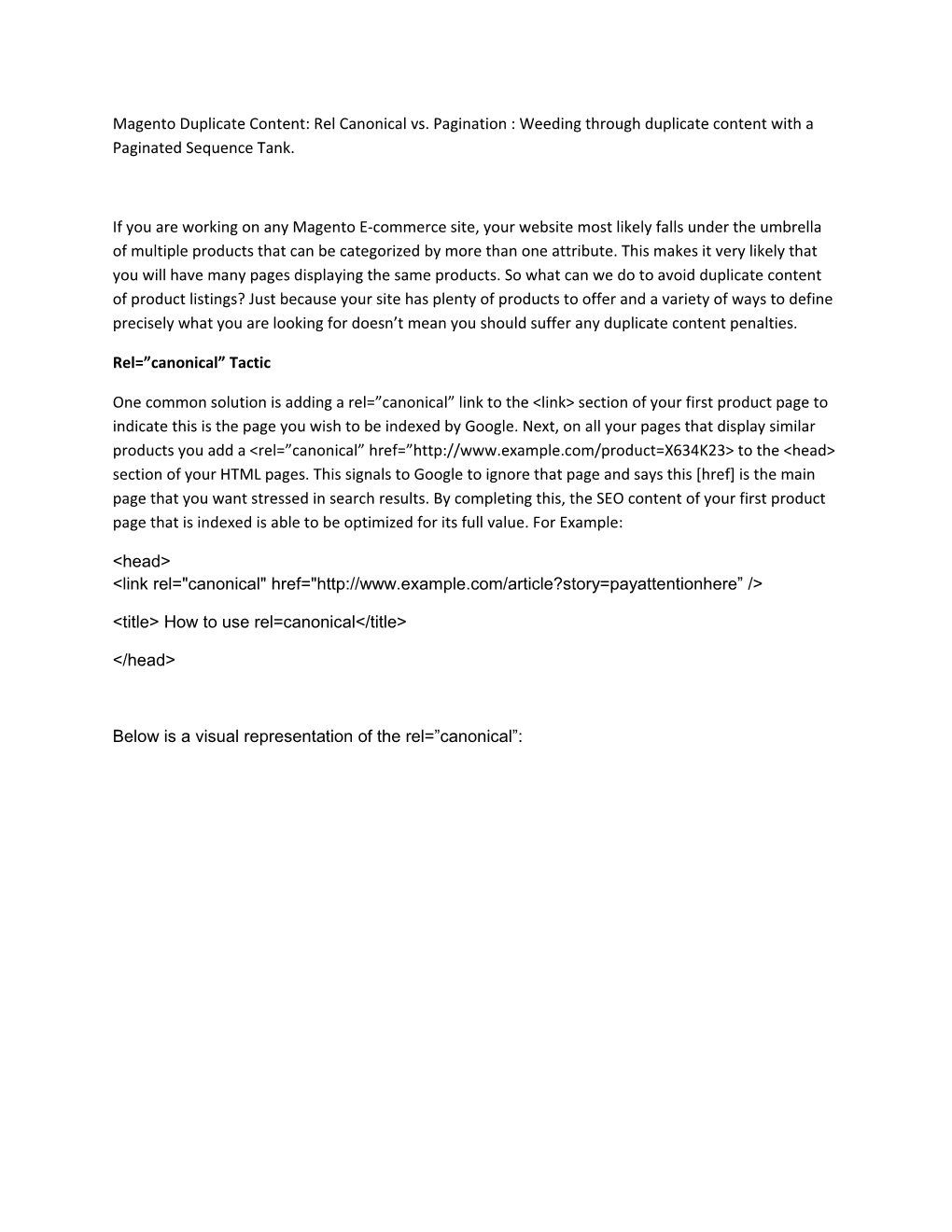Magento Duplicate Content: Rel Canonical vs. Pagination :Weeding through duplicate content with a Paginated Sequence Tank.
If you are working on any Magento E-commerce site, your website most likely falls under the umbrella of multiple products that can be categorized by more than one attribute. This makes it very likely that you will have many pages displaying the same products. So what can we do to avoid duplicate content of product listings? Just because your site has plenty of products to offer and a variety of ways to define precisely what you are looking for doesn’t mean you should suffer any duplicate content penalties.
Rel=”canonical” Tactic
One common solution is adding a rel=”canonical” link to the <link> section of your first product page to indicate this is the page you wish to be indexed by Google. Next, on all your pages that display similar products you add a <rel=”canonical” href=” to the <head> section of your HTML pages. This signals to Google to ignore that page and says this [href] is the main page that you want stressed in search results. By completing this, the SEO content of your first product page that is indexed is able to be optimized for its full value. For Example:
<head>
<link rel="canonical" href=" />
title> How to use rel=canonical</title>
</head>
Below is a visual representation of the rel=”canonical”:
Paginated Sequences: Rel=”next/prev” Tactic
Another solution that is the pagination sequence which uses rel=”next” and rel=”prev” this is a process that is most effectively used for pages in a series, one after the next. For example, if you were reading an article and it was split into four pages. From the second page, the rel=”next” would be linked to the third page in the article, the rel=”prev” would be linked to the first page. A user would most likely not click from the second page in the article and continue reading on the fourth page. For example:
<head>
<link rel="prev" href=" />
<link rel="next" href=" />
<title>How to use rel=next and rel=prev, page 2</title>
</head>
This code is easily implemented and organized the sequence of your pages, this differs from rel=”canonical” in that all the pages come from one page and point to the next, instead of each page pointing to one page.
Below is a visual representation of a Pagination sequence:
Which tactic should I use?
From a Search Engine Optimization point of view, the winner is definitely the Pagination Sequencing tactic. By implementing pagination sequencing you are able to yield the SEO strength of all linking pages rather than just the single canonical page with the rel=canonical tactic. This gives you the strength of all your title tags, image alt-tags, and content of all pages associated.
If you are interested in implementing the Pagination Sequencing Search Engine Optimization strategy on your Magento or e-commerce site, Customer Paradigm is here to help! Please contact us at _____ or call us at ______.
